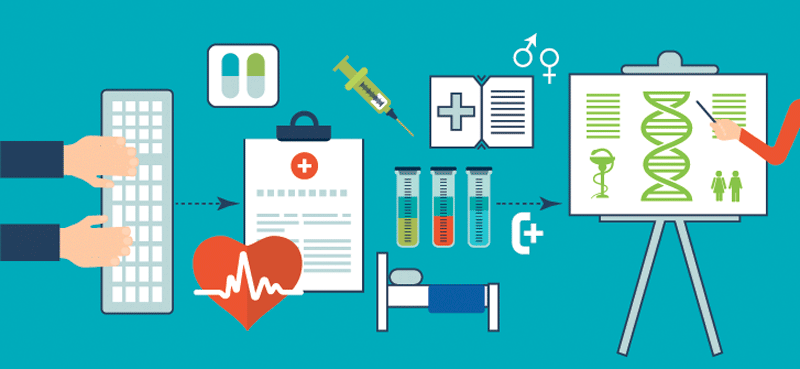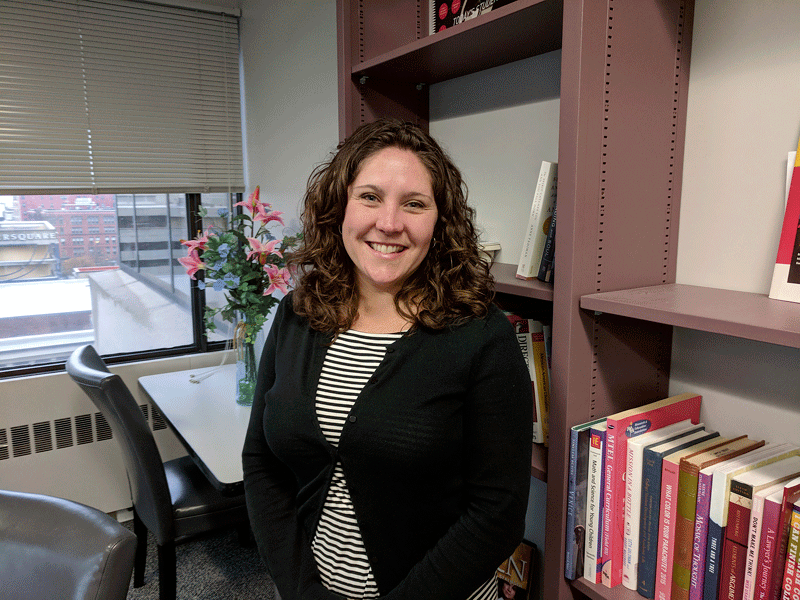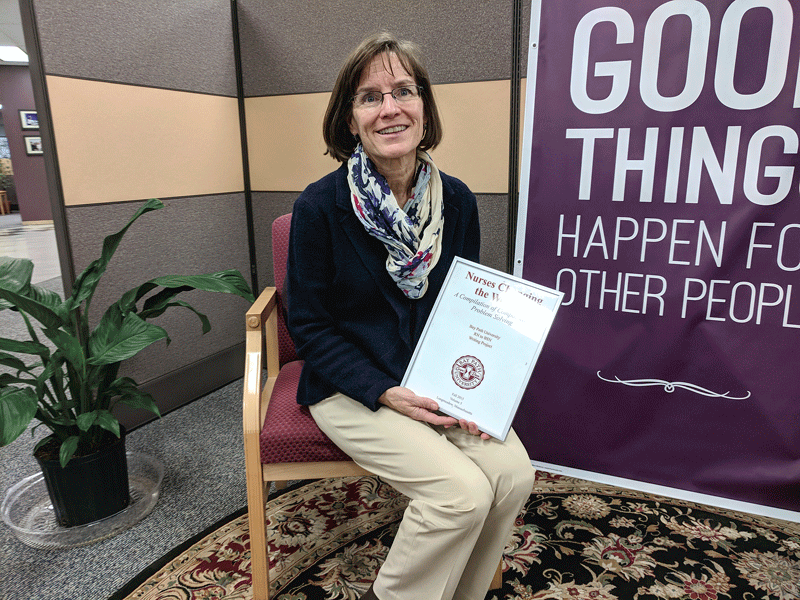Bay Path’s RN to BSN Program Helps Nurses Overcome Barriers
Connecting to a Better Future
 It’s no secret that hospitals and other healthcare settings are pushing for nurses with higher education levels, but it can be difficult for a working RN, often with plenty of family responsibilities, to go back to school. The RN to BSN Completer Program at the American Women’s College of Bay Path University solves that issue with a fully online format and plenty of support to help students succeed — and open doors that had previously been closed.
It’s no secret that hospitals and other healthcare settings are pushing for nurses with higher education levels, but it can be difficult for a working RN, often with plenty of family responsibilities, to go back to school. The RN to BSN Completer Program at the American Women’s College of Bay Path University solves that issue with a fully online format and plenty of support to help students succeed — and open doors that had previously been closed.
The 22 registered nurses who graduated in May from the American Women’s College of Bay Path University with their bachelor’s degrees — the first class to complete the new, innovative program — weren’t just improving their own career options, although they certainly did that.
On a broader level, they were responding to a call from the National Institute of Medicine for 80% of nurses to eventually achieve a baccalaureate level of education, one that encompasses the big-picture issues faced in settings ranging from hospitals to skilled-nursing facilities to public-health organizations.
“The national challenge for 80% of nurses to be BSN-prepared by 2020 indicated to us a great need for a flexible, affordable solution for registered nurses whose lives are already so full, between caring for others at work and, on top of that, having families, hobbies, and other personal responsibilities,” said Amanda Gould, chief administrative officer for the American Women’s College (TAWC).
Bay Path’s solution, she said, is an accelerated, 100% online program that lets students — many of whom are already juggling an RN position with family responsibilities — an opportunity to broaden their education on their terms, around their rigorous schedules.
The RN to BSN Completer Program, as it’s officially known, allows for licensed, registered nurses with an associate or diploma degree to return to college to complete a bachelor’s degree in nursing. Bay Path’s program is fully online, allowing students to enroll and participate from across the country, and the accelerated format means that, for most students, the degree can be achieved in 18 months.
Post-graduation surveys of the inaugural graduating class revealed that two quickly found promotions, one as a hospital ER manager and another as a manager of care coordination, said Maura Devlin, deputy chief learning officer at TAWC. A new survey underway is expected to reveal more such career moves, as well as a number of graduates preparing to continue on toward master’s degrees at other schools.

Amanda Gould says the online RN to BSN program is a tangible response to the national call for 80% of nurses to eventually have bachelor’s degrees.
Programs like this one will continue to bring the Bay State’s number of BSN-level nurses closer to 80% — the state had already set a goal of 65%, with the number currently around 50% — but it will also open doors that may be starting to close for RNs. Although there are no official numbers, Gould and Devlin said, RNs see hospitals and other organizations pushing for higher levels of education, and favoring BSN-level nurses in hiring and promotions.
Bay Path’s new nursing program, now educating its second class of enrollees, is doing what it can to meet that demand, and early returns have been positive.
Expanding Access
Backing up a little, the American Women’s College was founded in 2013 with a mission to expand access to higher education to the 76 million American women who do not have a college degree. Its 28 programs run the gamut from accounting to criminal justice; from child psychology to early childhood education; from entrepreneurship to food science and safety.
Many students enrolled in various RN-to-BSN programs in this region haven’t necessarily had to leave a job to do so, but they have been challenged to fit classes in between work and family life. The online option at TAWC allows students to engage in classroom activity — much of which takes place on forums and discussion boards — on their own schedule.
The RN-to-BSN track technically requires 120 credits, but 30 are awarded up front for the students’ RN training and experience, and other credits (up to 84, in fact) can be transferred in as well, depending on the student’s prior education, training, and experience.
Devlin said the courses are patient-focused and reflect the ‘nine essentials’ of baccalaureate nursing education established by the American Assoc. of Colleges of Nursing. These include a liberal education base; evidence-based practice; quality care and patient safety; information management; policy, finance, and the regulatory environment; communication and collaboration; population health management; professionalism and values; and general nursing practice.
“These are our program outcomes,” Gould said, adding that administrators have explicitly defined some fields students may see as options for professional growth upon attaining their degree, such as case manager, infection control, home care, hospice care, occupational nurse, managerial positions, public health, risk management, and specialty care.
There’s a self-reflective element to the program as well, Devlin said, and students are encouraged to consider their unique attributes and leadership skills. “The program has the BSN candidates thinking about themselves as leaders in the field of nursing, and positions them to go on to those types of roles.”
Classes are run in a cohort model, meaning the students navigate through the courses together, although they don’t have to be online at the same time. The classes are conducted in six-week sessions — six of them per year — and taught by master’s level nursing educators.
“When we surveyed the first cohort of 22 students in May, every one of them said they would recommend the program,” Gould said. “That was really validating.”
The American Women’s College was developed to improve performance, retention, and graduation rates for nontraditional learners, and does so partly through the development of Social Online Universal Learning (SOUL), a data-driven approach to online education at TAWC, Gould said. Among its features, SOUL features customized instruction, dedicated educator coaches to help students who start to struggle, and virtual learning communities to engage other students who share their goals and professional interests.
And there are definitely some common challenges. Seventy percent of TAWC students are first-generation college attendees, one-third are single mothers, and more than half are Pell-eligible, which speaks to economic need. “We really do feel it’s kind of mission-driven, in that we’re creating a new entry point to college for this population,” she said.
She cited one student, a 38-year-old who had dropped out of high school when she became pregnant, who now works as an administrative assistant. “Her daughter is now college age, and she wanted to be a role model for her daughter,” Gould explained, so she enrolled in the American Women’s College and is now one of its top students.

Maura Devlin says the first cohort of graduates is already seeing broadened career opportunities and even promotions.
“She’s kind of representative of a lot of students we serve who are trying to make a better life for themselves and their families,” she told BusinessWest. “Their motto has become ‘it’s my time.’ For a long time, they’ve put their families first, and they’ve finally come to a place where they give themselves permission to get their education.”
First Steps
The American Women’s College received some good news in October when the Commission on Collegiate Nursing Education (CCNE) voted to grant full accreditation through 2022 to the RN to BSN Completer Program.
“The collective commitment to quality education demonstrated each day by our faculty, staff, and community partners to provide our students with the knowledge and skills they need to be outstanding nurses is at the heart of our work, and our program status reflects that,” said Marjorie Bessette, director of the Nursing program.
Meanwhile, TAWC maintains partnerships with Baystate Health and Mercy Medical Center to work together to increase the number of nurse practitioners with BSN degrees.
“As a nurse, I want to give the best possible care that I can to patients. It’s my job to save lives. Completing my BSN has ensured that I can do just that,” said Laura Mazur, a nurse at Baystate Medical Center who graduated from Bay Path’s program in May. “I used to think of myself as an in-class learner, but as a floor nurse working the midnight shift, I simply didn’t have the time to spend in a classroom. The online program through the American Women’s College fit well into my life.”
Joseph Bednar can be reached at [email protected]




